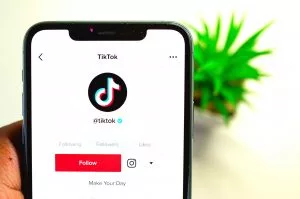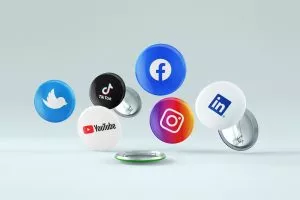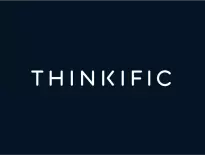Out of 4.8 billion people who use the internet globally, 1 billion monthly active users, which has grown to 1.7 billion in 2023 use TikTok for entertainment and marketing purposes.
TikTok was invented without any backing from tech giants and its own set of algos made it popular instantly.
Be that as it may, it shook the larger social media companies to the core and has created a social media revolution in the process.

How is TikTok creating this social media revolution and what’s the future like? Let’s take a look.
The TikTok Revolution – How TikTok took over Social Media
When TikTok came into the picture in 2016, Facebook, WhatsApp, and Instagram were the biggest players in this sector. And then came Telegram, Snapchat, and some others.
These social media platforms offered visual content sharing, including videos and images in a standardized format, further enhanced by the intuitive features of the TikTok video editor.
Users could send pictures and videos privately and on their social media timelines.
TikTok swooped in and revolutionized the social industry by offering a different set of rules to video sharing.
The features offered by the company were brand new to the social media world, but they kept users hooked on the platform.
TikTok platform experienced a large increase in user numbers which gradually built up to the 1 billion monthly active users approximated recently. The increase in user statistics and engagement piqued interest in other platforms, which triggered the TikTok social media video revolution.
TikTok’s Creation – When & How was it built

TikTok’s story is not the regular story of U.S based tech giants operating globally now. It all started with Zhang Yiming’s dream to revolutionize and shake things up with social media video sharing options.
The platform was developed in China by in-house developers working at ByteDance.
TikTok name then, Douyin, was not that appealing or catchy like TikTok and was not marketable globally.
Due to the revolutionary features, this platform had the name TikTok come about for the global audience.
After its development, it faced some attempted bans in various countries around the globe, including the U.S.
Despite those legal issues that arose, TikTok remained relentless and became an internet sensation in 2016, the year it was founded. Its user-base dramatically increased and reached 500 million users only within the first year.
How TikTok created a social media frenzy & changed all the rules
Most of the features introduced by TikTok app were new inventions that the current social media platforms lacked. These features drew attention to the app, and subsequently, other platforms started to gradually replicate these features.
In retrospect, the features that were invented by ByteDance on TikTok social media changed the standardized rules of sharing and creating video content for social media.
For example, the most common feature of replicated by other major social media platforms is the endless scroll functionality.
This endless scroll feature broke the social media common rules of viewing one video at a time as they appear on a typical social media timeline.
Instead, users can watch more videos by just simply scrolling.
At the same time, the videos are not displayed at random, but videos are personalized based on each user’s interests.
These two main features created the social media frenzy involving Facebook, Instagram, Snapchat and even YouTube. The replicated versions also follow the same set of rules established by TikTok video platform.
TikTok Competition & Copycats – Who they are & how have they fared

The TikTok competition involves major companies developing popular social media platforms for years.
All the features mentioned above about TikTok were just too irresistible for these major companies and as a result, they replicated them.
Snapchat replicated TikTok features by bringing in the Spotlight section.
On the other hand, YouTube came up with Shorts while Instagram and Facebook developed reels.
Here is how each social media platform replicated TikTok’s features on their platforms.
1. Snapchat Spotlight
Snapchat Spotlight took the structure of TikTok by allowing users to post endless scrolling types of videos in this dedicated feature on this video platform.
Users can post a short video of up to 60 seconds on Spotlight.
The difference between Snapchat’s Spotlight and TikTok is that there is no comments section. Also, Spotlight does not have a variety of music and audio clips that TikTok has.
All other features are the spitting image of TikTok videos, but Snapchat Spotlight has very limited functionalities available on their platform. The user base is very low.
This is due to the fewer overall monthly active users.
Snapchat Spotlight did not attract a wider audience since there were already many TikTok replicas in the market.
2. YouTube Shorts
YouTube also streamlined their viewing experience by composing a new feature within their mobile app.
The new feature was aptly named Shorts which corresponds with the main aim of this development. YouTube developed Shorts in imitation of TikTok to enable users to share short-form video content.
Mainly this feature is for entertainment purposes making YouTube more fun and addictive to users.
The usage of this feature is not as much as TikTok since it was embedded in a platform that is not generally used for entertainment purposes.
However, YouTube Shorts are faring much better than Snapchat Spotlight since YT already had many users subscribed to their platform.
YouTube Shorts also did not attract a new audience but added a new feature that current users could enjoy.
3. Instagram Reels
Instagram is one of the best that ever replicated TikTok’s endless video scrolling with the advent of Reels. It is one of its biggest competitor.
This feature on Instagram has an intuitive design adopting the already existing UI of this platform. Instagram Reels have comments, like buttons enabling users to engage with the content.
Users can also share reels on their story, contributing to the videos going viral on this platform.
Unfortunately, Instagram can’t save videos on the device’s local drive as TikTok does, but the feature is very beneficial on Instagram.
Instagram users are spending more time on Reels now instead of being on their timelines sharing and viewing their friend’s and family’s moments.
4. Facebook Reels
Facebook Reels are similar to Instagram’s replica of TikTok since they adopted the pre-existing UI and layout.
The two platforms also have similar features, including commenting and liking the videos posted. However, Facebook Reels also allows longer videos to be posted as a Reel.
Live videos can also be converted to Reels and be available on the endless video scrolling.
Users can share the videos posted on this section of Facebook cross-platform as a link and also on the platform.
Unlike Instagram Reels, which allow sharing to Stories only, Facebook allows users to share the videos on their timelines. The design is seamless and uses similar personalization algorithms as TikTok and Instagram.
Cincopa is a video hosting and video sharing solution that provides social media content creators the support to go viral on their own website. Find out how our video solution technology can help you go viral without much effort.









